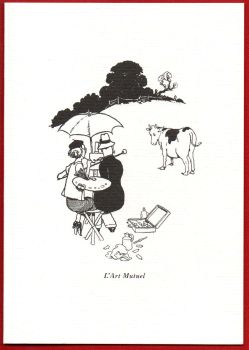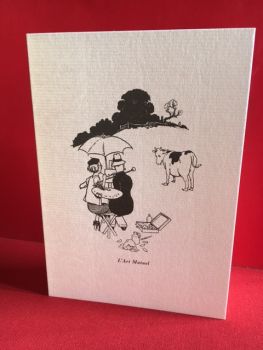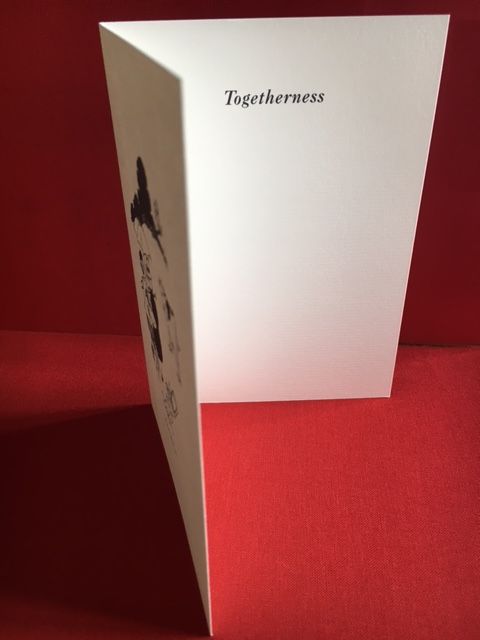“Mr W. Heath Robinson is an artist at once so thorough, so conscientious and so original that he can be compared for the moment only to himself.”
Heath Robinson Valentine Card
L’Art Mutuel
£2.50
The charming scene of togetherness on this card comes from How to be a Perfect Husband by William Heath Robinson and his regular collaborator K. R. G. Browne.
18 in stock
Dispatched next day with Royal Mail 2nd Class
- RRP: £2.50 (incl. VAT)
- Format: 105 mm x 148 mm (A6) landscape, folded
- Paper: FSC 300 gsm ivory laid cartridge
- Envelope: White
- Weight: 9 g
- ISBN: 978 1 8733 2961 0
- Publication: August 2017
In 1937 Heath Robinson published a self-mocking little book called How to be the Perfect Husband. The words were by his five-times collaborator K. R. G. Browne, grandson of Hablot Browne who as ‘Phiz’ illustrated many of Dickens’ books, but what keeps this book alive and fresh is Heath Robinson’s drawings, including the delightful plein air life-drawing tableau depicted in L’Art Mutuel. Only a true artist could capture in a few deft strokes the coyness of the model, in this case a cow.
Front Page Text: L’Art Mutuel
Message Inside: Togetherness
William Heath Robinson (1872-1944) is one of the few artists whose names have become part of the English language. According to the Oxford English Dictionary, the expression is used to describe ‘any absurdly ingenious and impractical device’. Heath Robinson started out as a landscape artist and book illustrator before finding world-wide fame with his mechanical fantasies. He invented machines for making coffee, lighting cigars, extinguishing candles, peeling potatoes, testing raincoats, saving chickens from injury when crossing the road and conducting just about every other conceivable, and sometimes inconceivable, activity. He satirized the new ways of living that came with technological change, small flats and shortages, creating a whimsical social commentary on his times: history encapsulated in pictures.










